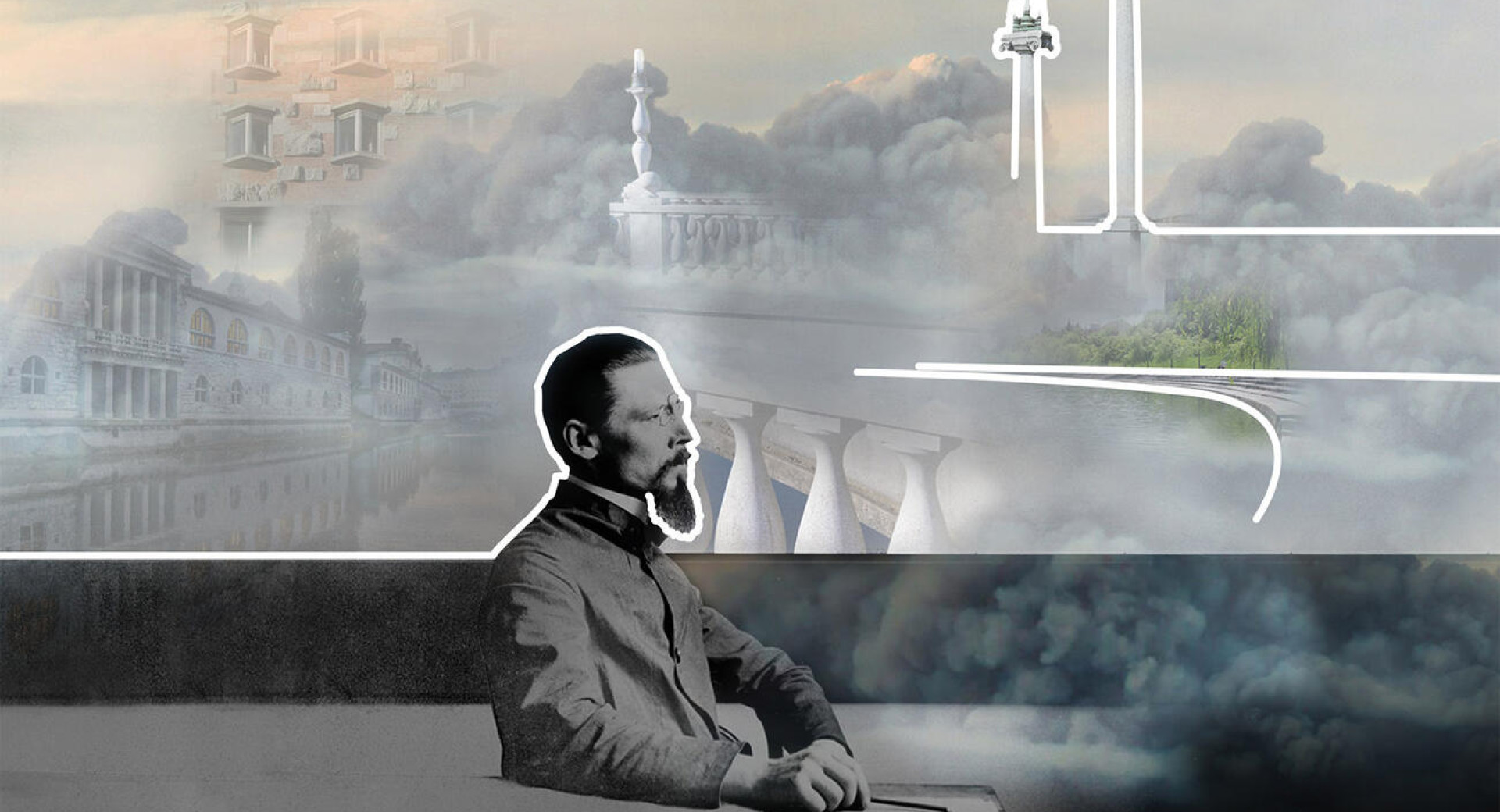GAMIFIED TOUR OF PLEČNIK’S UNREALISED VISIONS
19 Oct 2021
“Greetings, traveller! I’m happy that you woke me from my dreams. They were quite wild. I saw how I would finally transform Ljubljana into a true capital city for the Slovenian nation, infused with the wisdom of ancient civilisations and the bustle of modern life," are the opening words addressed to the user by Jože Plečnik himself, who then offers an invitation to join him on a walk through some unusual projects that he designed but never actually realised.

© Turizem Ljubljana
The gamified experience “Plečnik’s visions" is the first in a series of new experiences being developed this year by Ljubljana Tourism together with its partners, and it is aimed at modern tourists who are seeking authentic experiences.
In cooperation with the City Museum of Ljubljana and the France Stele Art History Institute of the Academy of Arts and Sciences, we devised a new gamified guided tour of unrealised projects designed by the great architect Jože Plečnik, which would have left a major impact on the present-day appearance of Ljubljana.
The guided tour is available for free via the Nexto mobile app, in seven languages, and the start point is the TIC. Using augmented reality, the app reveals for users four major unrealised works that Plečnik planned for Ljubljana: The Mesarski Most bridge, the new City Hall, the City Hall entrance to the Castle and the Cathedral of Freedom. The route also takes users past Plečnik’s works that were carried out: across the Three Bridges past Prešeren Square to Krekov Trg square, to Čevljarski Most bridge and Novi Trg square, the Križanke complex, Vegova Street and the National and University Library (NUK), then on to Tivoli Park. Each point presents a riddle or task that the user must resolve in order to unlock information about the unrealised project.
Plečnik’s Ljubljana ranksas a kind of special urban creation of its own kind among the most important integral works of art of the 20th century, so Ljubljana Tourism has created a whole series of experiences related to this theme.
The investment is being co-financed by the Slovenian Government and the European Union from the European Regional Development Fund.
